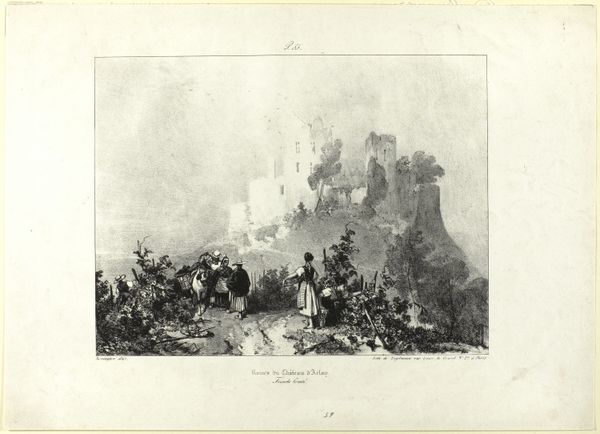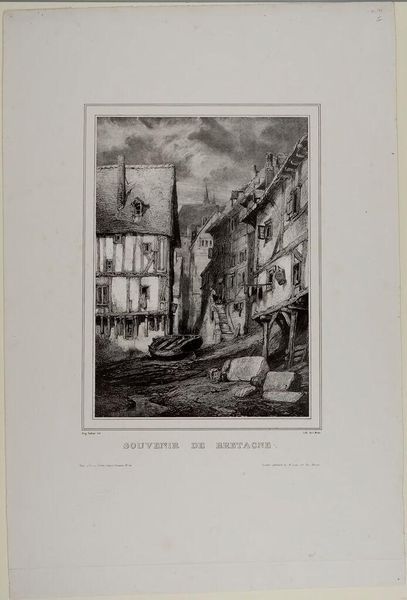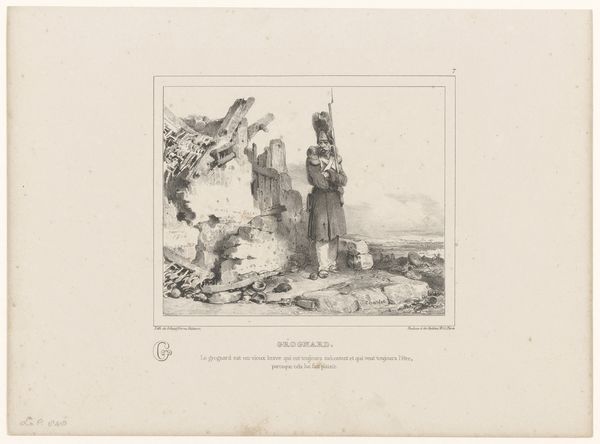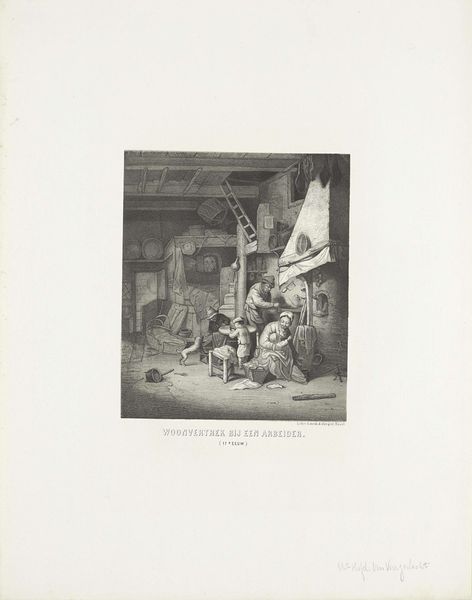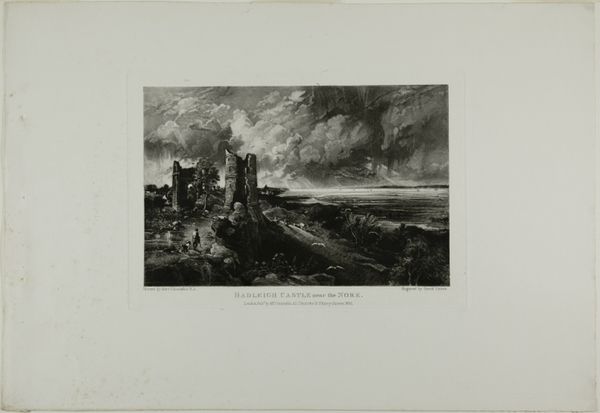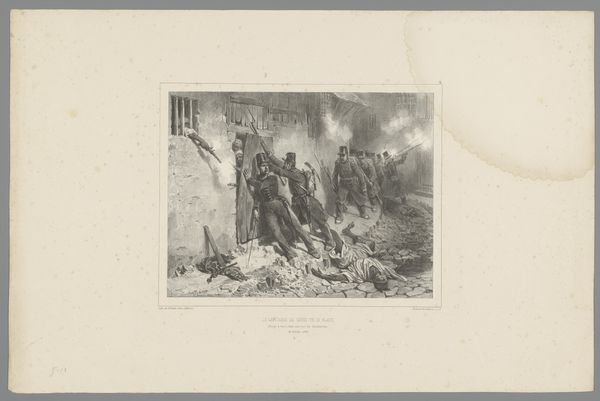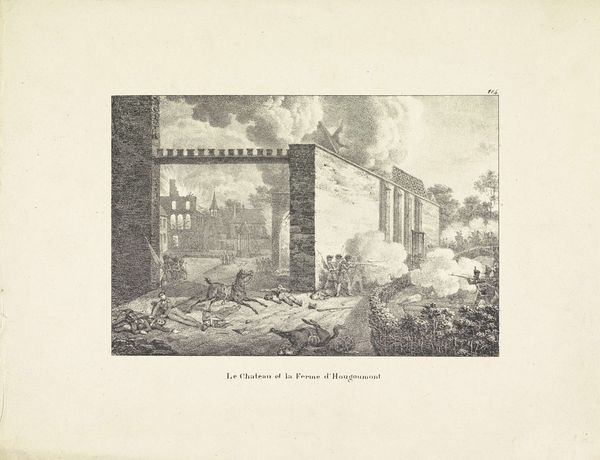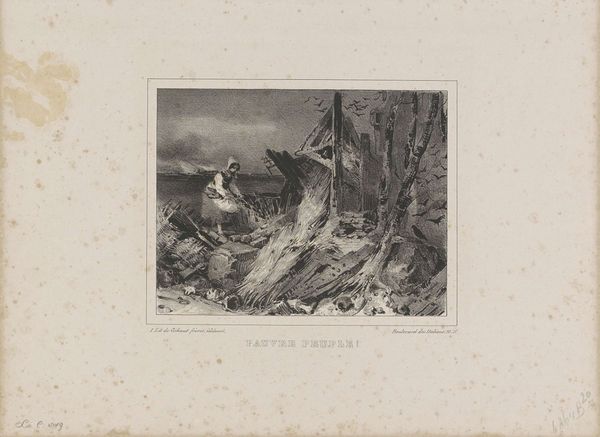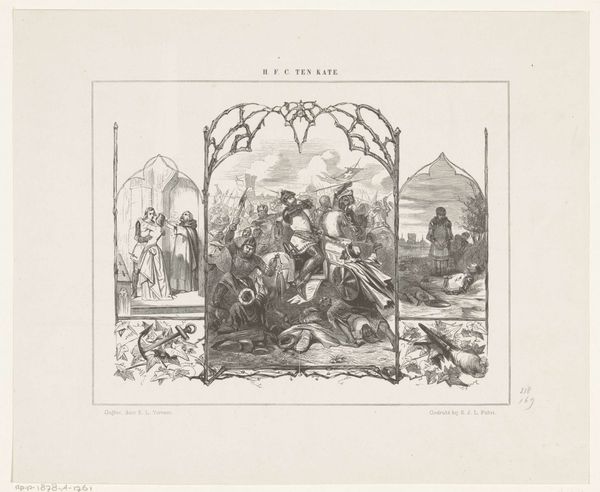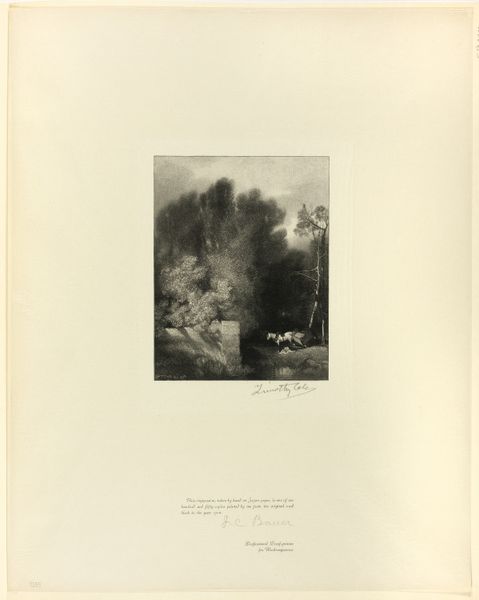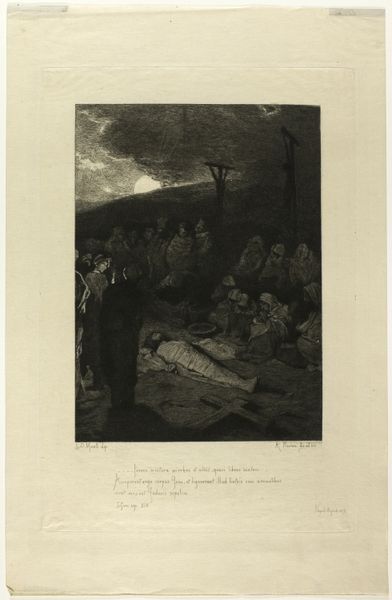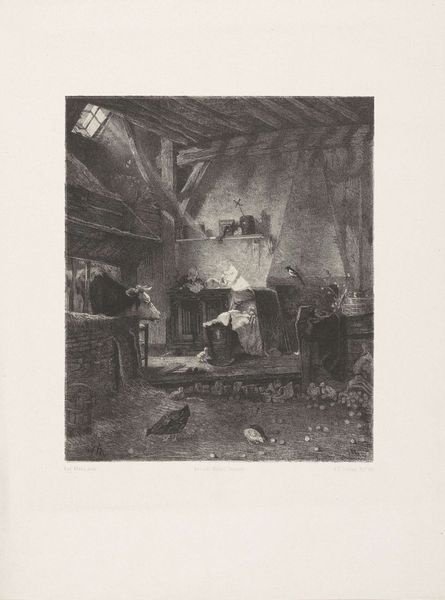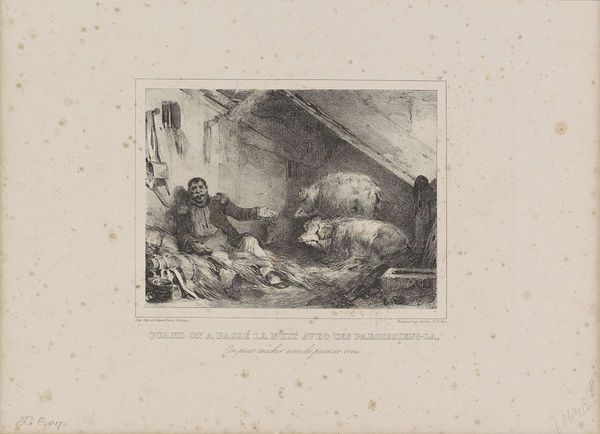
Beleg van de Citadel van Antwerpen / (11 December 1832.) 1832 - 1833
0:00
0:00
print, engraving
#
narrative-art
# print
#
figuration
#
romanticism
#
cityscape
#
history-painting
#
engraving
Dimensions: height 255 mm, width 355 mm
Copyright: Rijks Museum: Open Domain
Curator: What strikes you first about this scene? Editor: Chaos, I suppose. But carefully organized chaos. This print, illustrating the siege of the Citadel of Antwerp, sometime between 1832 and 1833, certainly conveys the violence and disorder of warfare. Curator: Indeed. Consider, though, the composition. Our eye is drawn to the figures near the breached doorway. Notice how their gestures and expressions contribute to a larger narrative of determined assault. It evokes bravery and duty. Editor: Bravery, or blind obedience? What of the bodies strewn across the foreground? The human cost of this "duty" seems conveniently minimized. The print reduces lives to battlefield detritus, furthering the romantic ideal of war. Curator: You see a critique of war. I appreciate that, but the artistry lies also in visually representing historical moments. The stark contrasts create depth. It almost becomes a stage for heroic drama, playing out historical inevitability. The image, as symbol, aims at something far grander than a polemic. Editor: A drama certainly crafted by those with vested interests in upholding imperial power. Images such as this helped shape public opinion, legitimizing military actions and celebrating a specific brand of patriotism tied to nationalism. Curator: But doesn't every society produce images affirming core values? Isn't the real question the *integrity* of the symbols employed? The architecture itself speaks. Fortification is a long process, layered across countless attacks. One reads defense as persistence, rather than the ambition behind the offense. Editor: I hear you. But those defensive walls ultimately serve exclusionary purposes, defining who is 'in' and who is 'out.' The artist, Johannes Steyn, presents an episode where such barriers are violently contested, disrupting any simple binary. I can appreciate his detailed craftsmanship, while also challenging its implied social values. Curator: I’ll concede to the fact that interpretations shift as socio-political winds do. Returning again and again, and finding something new, is what these emblems achieve. Editor: Exactly. Ultimately, perhaps we both seek a more critically conscious gaze in this era of fake news, propaganda, and the weaponization of collective cultural memory.
Comments
No comments
Be the first to comment and join the conversation on the ultimate creative platform.
